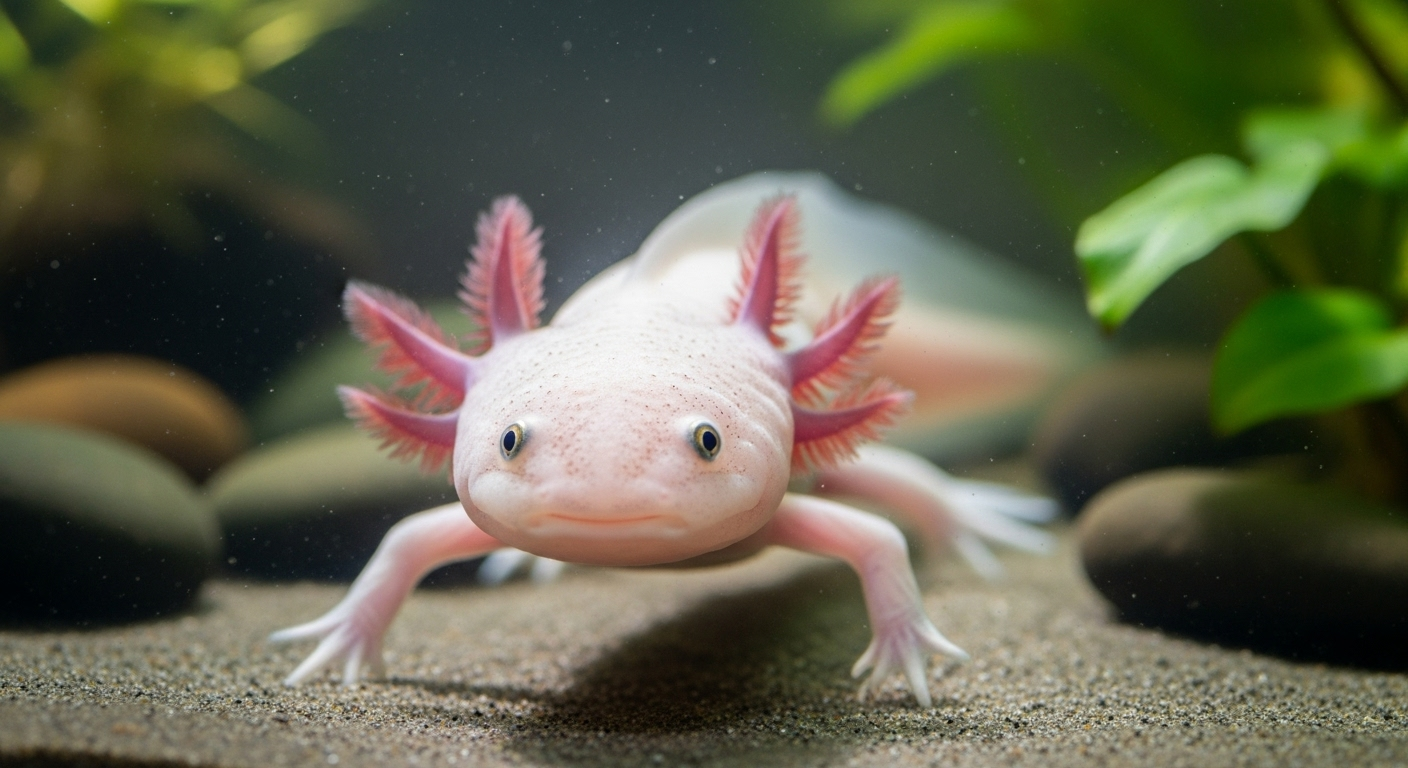Exploring the Enigmatic World of Axolotls: Nature's Aquatic Marvels
The peculiar charm and remarkable regenerative abilities of axolotls have captivated scientists and animal enthusiasts alike. These salamanders, native to Mexico, possess an uncanny ability to regrow lost limbs and organs, making them a subject of fascination in the realms of biology and regenerative medicine. As we delve into the world of these aquatic wonders, we'll uncover their unique characteristics, their precarious status in the wild, and their growing popularity as exotic pets.

The Unique Biology of Axolotls
Axolotls possess a remarkable set of biological features that set them apart from other amphibians. Perhaps their most striking characteristic is their neoteny, a condition where they retain juvenile features throughout their lives. This means that axolotls never fully metamorphose into a terrestrial adult form, instead remaining aquatic and keeping their larval features, such as external gills and a tadpole-like dorsal fin.
These external gills, feathery structures protruding from either side of their heads, allow axolotls to breathe underwater efficiently. They also have rudimentary lungs, which they can use to gulp air from the surface if necessary. This dual respiratory system enables them to adapt to various aquatic environments and survive in low-oxygen conditions.
Regenerative Superpowers
The regenerative capabilities of axolotls are nothing short of astounding. They can regrow entire limbs, organs, and even portions of their brain and heart. This extraordinary ability has made them a prime subject for scientific research in the field of regenerative medicine.
When an axolotl loses a limb, it can regrow the entire appendage, complete with bones, muscles, and nerves, in a matter of weeks. This process involves the formation of a blastema, a mass of undifferentiated cells that can develop into various specialized tissues. Scientists are studying this mechanism in hopes of unlocking regenerative potential in human medicine, potentially leading to breakthroughs in treating injuries and degenerative diseases.
Conservation Status and Threats
Despite their resilience in captivity, wild axolotls face a dire situation in their native habitat. The canals of Xochimilco, once teeming with these salamanders, now harbor a critically endangered population. Estimates suggest that fewer than 1,000 axolotls remain in the wild, with some studies indicating numbers as low as 100 individuals.
The primary threats to wild axolotls include habitat destruction, water pollution, and the introduction of invasive species. Urban expansion in Mexico City has led to the degradation of their natural habitat, while agricultural runoff and industrial pollution have compromised water quality. Additionally, introduced fish species, such as tilapia and carp, prey on axolotl eggs and compete for resources.
Axolotls in Captivity and Research
While their wild populations dwindle, axolotls thrive in captivity. They have become popular subjects in scientific research and increasingly sought-after exotic pets. In laboratory settings, axolotls contribute to studies on regeneration, development, and evolution, offering insights that could potentially revolutionize medical treatments for humans.
As pets, axolotls require specific care and conditions to thrive. They need a well-maintained aquarium with cool, clean water and a diet consisting of live or frozen foods. The cost of setting up a proper axolotl habitat can range from $200 to $500, with the axolotls themselves typically priced between $20 and $70, depending on their color morph and source.
The Future of Axolotls: Conservation and Ethical Considerations
As interest in axolotls grows, both in scientific circles and the pet trade, questions arise about the ethics of their captive breeding and potential impact on wild populations. Conservation efforts in Mexico focus on habitat restoration and protection, but the challenge remains significant.
Captive breeding programs play a crucial role in maintaining genetic diversity and potentially bolstering wild populations. However, the popularity of axolotls as pets raises concerns about responsible ownership and the potential for released captive-bred individuals to introduce diseases or genetic anomalies into wild populations.
As we continue to unlock the secrets of these fascinating creatures, it becomes increasingly important to balance scientific inquiry and pet ownership with conservation efforts. The future of axolotls, both in the wild and in captivity, depends on our ability to understand, protect, and responsibly manage these remarkable amphibians. Their unique biology and regenerative abilities not only captivate our imagination but also hold the potential to unlock groundbreaking advances in medical science, making their preservation all the more crucial for both ecological and human benefit.





